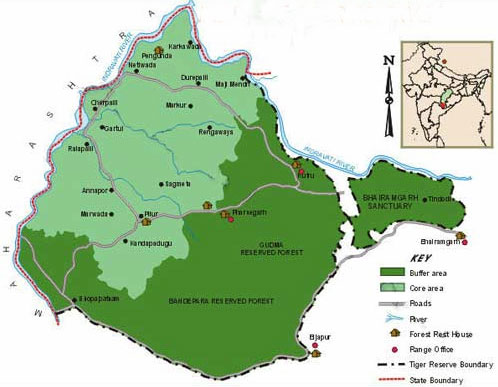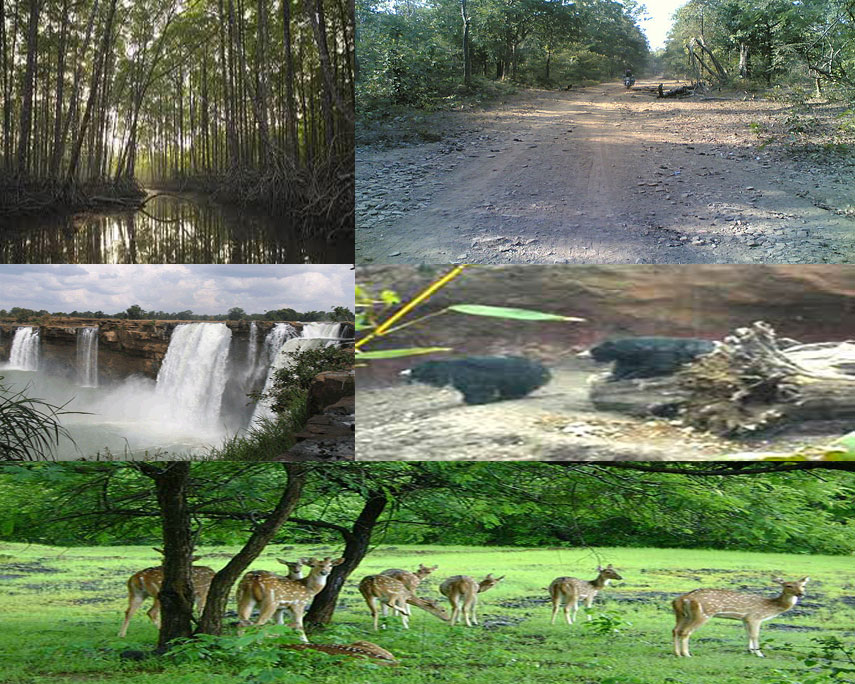Home :: Indian National Parks :: Indiravathi National Park
Indiravathi National Park
Indravati National Park is the finest and most famous wildlife parks of Chhattisgarh. Also the only Tiger Reserve in the state, Indravati National Park is located in Dantewada district of Chhattisgarh. The Park derives its name from the Indravati River, which flows from east to west and forms the northern boundary of the reserve with the Indian state of Maharashtra. With a total area of approximately 2799.08 sq km, Indravati attained the status of a National Park in 1981 and a Tiger Reserve in 1983 under the famous Project Tiger of India to become one of the most famous tiger reserves of India.

Most of the islands in the park are densely forested; the open spaces are covered with scrub and creepers. A casual glance around and one can spot brilliant tropical flowers including orchids, broken branches and fallen leaves spread over the jungle pathways. One can also hear the bird calls, but unless in the open, it is difficult to spot the terns, gulls, ospreys, serpent crested eagles, wood pigeons and of course the swifts.
The topography of the Park mainly comprises of undulating hilly terrain with altitude ranging between 177 to 599 m above the sea level. The Park is famous for its unique and diverse wildlife and bird species including some of the most endangered species such as Wild Buffalos and Hill Mynas. A series of beautiful hill ranges with lush green vegetation and unique and varied wildlife make Indravati National Park a must visit for wildlife enthusiasts and nature lovers.

The flora in the Indravati National Park is mainly comprises of tropical moist and dry deciduous type with predominance of the Sal, Teak and Bamboo trees. There are also rich patches of excellent grasslands providing much required fodder to Wild buffalos, Chital, Barking Deer, Nilgai, Gaurs and other herbivores of the park. The most commonly found trees in the park are Teak, Lendia, Salai, Mahua, Tendu, Semal, Haldu, Ber and Jamun. The major wildlife in Indravati National Park include the endangered Wild Buffalos, Barasinghas, Tigers, Leopards, Gaurs (Indian Bison), Nilgai, Sambar, Chausingha (four-horned Antelope), Sloth Bear, Dhole (Wild Dog), Striped Hyena, Muntjac, Wild Boar, Flying Squirrel, Porcupine, Pangolins, Monkeys and Langurs among many others. The commonly found reptiles in the park are Freshwater Crocodile, Monitor Lizard, Indian Chameleon, Common Krait, Indian Rock Python, Cobra and Russell's Viper to name a few. The Park also gives shelter to the large variety of birds of which Hill Maina is the most important species here.
The best season to visit the Park is from 15th December to 15th June.



